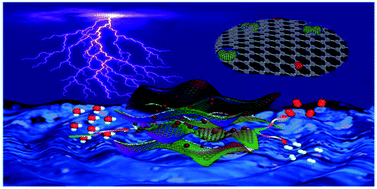Fe, Al-co-doped NiSe2 nanoparticles on reduced graphene oxide as an efficient bifunctional electrocatalyst for overall water splitting†
Abstract
Developing low-cost and highly efficient electrocatalysts for overall water splitting is of far-reaching significance for new energy conversion. Herein, dual-cation Fe, Al-co-doped NiSe2 nanoparticles on reduced graphene oxide (Fe, Al-NiSe2/rGO) were prepared as a bifunctional electrocatalyst for overall water splitting. The dual-cation doping can induce a stronger electronic interaction between the foreign atoms and host catalyst, for optimizing the adsorption energy of reaction intermediates. Meanwhile, the leaching out of Al from the crystal structure of the target product during the alkaline wash creates more defects and increases the active site exposure. As a result, the Fe, Al-NiSe2/rGO catalyst exhibits excellent catalytic activities for both the OER and HER with an overpotential of 272 mV @η10 for the OER in 1.0 M KOH and 197 mV @η10 for the HER in 0.5 M H2SO4, respectively. A two-electrode electrolyzer using Fe, Al-NiSe2/rGO as the anode and cathode shows a low voltage of 1.70 V at the current density of 10 mA cm−2. This study emphasizes the synergistic contribution of the dual-cation co-doping effect and more defects created by Al leaching to boost the performance of water splitting.



 Please wait while we load your content...
Please wait while we load your content...